The density of the Isover insulation for the facade: how to choose the right one?

Insulation of the facade is far from an idle question for residents of many regions with cold winters and hot summers or in places where piercing winds are frequent guests. Choosing the products of the European company Isover, you will not be disappointed. It has excellent performance and excellent quality.

Material features
The Saint Gobain company, which produces facade insulation, began its work 75 years ago. For such a long time, she has achieved significant results, constantly working on innovative technologies, and today many European and domestic construction organizations use Isover products. Today, the company's products have become even more affordable for Russians: several Saint Gobain enterprises are located in Russia.

The company has developed its unique product on the basis of mineral wool. But mineral wool is a soft material prone to deformation, while Isover has the necessary rigidity. The technical data of this material is one of the best among similar products. It has many advantages:
- it is an environmentally friendly material made from natural substances;
- it is very light - the average value is 45 kg / m3;
- has improved flexibility and elasticity;
- very easy to transport, it can be compressed 3 times, after which it will return to its original shape;
- perfectly copes with the function of insulation;

- not subject to ignition;
- durable - the manufacturer guarantees a service life of 50 years;
- has good vapor permeability;
- provides a good level of sound insulation;
- not subject to decay;
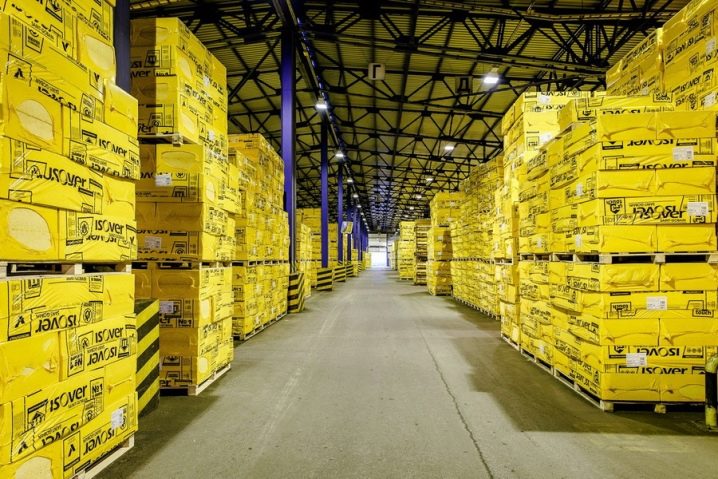
- it is easy to mount, professional skills and special tools are optional;
- is a "breathable" material, helps to maintain a good indoor climate;
- products are produced in a wide range, which allows you to choose the appropriate type of insulation;
- resistant to temperature fluctuations and seasonal changes in humidity, does not change its size;
- does not require thorough preparation of the base before installation, which saves consumables and time costs;
- products are produced in rolls and plates, which allows you to choose the method of stacking.
It is not necessary to cover it from the outside with facing material - the insulation has a wonderful appearance.



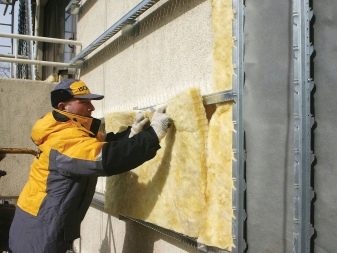
Despite the remarkable properties of the product, you still need to take into account some points:
- when cutting, dust may form, therefore work should be carried out in a respirator and protective clothing;
- the insulation should be laid on a surface that is well cleaned of dust, dirt, old layers of paint;
- primer must be applied to the insulation plates before installation;
- due to its low density, it can be damaged by strong external influences.

Scope of application
Isover is widely used in industrial and civil construction, it can be used both outside buildings and indoors. The presence of different types makes the material multifunctional:
- it is used in multi-layer masonry and for ventilated facades, suitable for horizontal, vertical and inclined surfaces;
- they insulate floors between floors, pitched and flat roofs, walls;
- it can be used to insulate attic rooms, ceilings and partitions;
- it is suitable for the load-bearing walls of the building;
- great for floors and ceilings;
- some types are specially designed to insulate pipelines in order to protect precision equipment from the influx of cold air;
- Isover is used to create additional sound insulation in the room, applied to wall partitions and suspended ceilings.




Varieties and characteristics
There are many types of Isover products, and when choosing a suitable variety, you should study the characteristics of the product and relate them to the tasks ahead. To insulate the facade of a cottage, summer cottage, small house, Isover "Facade-Master" is often used. It is effective in keeping the home warm and will not damage its appearance. For small structures, it is a material with optimal strength and density.

This material is slabs 50-200 mm thick, 1000 mm long and 600 mm wide. Since the mass of the slabs is small, the installation can be carried out quickly and with good quality. This will also be facilitated by a high level of adhesion of the plates with the adhesive composition.

The "Plaster Facade" has good characteristics. Created according to the latest technologies using mineral wool for the base base, the product is suitable for insulating buildings of various types. Produced in slabs, the slab has a standard size.

Isover "Light" is suitable for frame walls, suspended ceilings, various partitions, an internal heat-insulating layer in a hinged facade system. For its production, volcanic rocks with a minimum of synthetic binders are used. The basalt slab has a length of 1200 mm, a width of 600 mm, and a thickness of 50 to 150 mm.

It is easy to work with the material, since it is easy to cut, it does not require additional fasteners when installing a raspor. Providing high thermal protection, the material will also create sound insulation.
Isover "Warm Walls" was created especially for thermal insulation of walls. It is suitable for external frame walls, for external walls, on which cladding will be made, which will be lined with bricks or siding, clapboard. But it is also suitable for insulating walls from the inside, for attics, pitched roofs. The insulation will maintain a comfortable microclimate in the house, which will be facilitated by the enhanced water-repellent properties of the product - the AquaProtect technology is used in its manufacture.
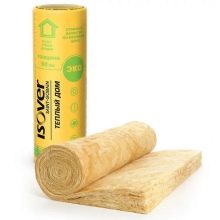

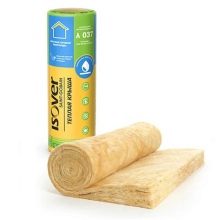
In addition, the material is highly elastic, therefore:
- restores its shape;
- will not break during installation;
- will not slip in frames;
- he does not need additional fasteners.


In cases where the insulation will not carry the load, it is advisable to use Isover "Classic Plus". For its manufacture, mineral wool with a special fiber formation is used, which makes it possible to improve the effect of heat and sound insulation, although its density is 11 kg / m3. It can be used for walls and partitions, floor and ceiling insulation, insulating different types of roofs. It is a durable material with high performance characteristics. It is absolutely environmentally friendly, does not harm human health.


It is very convenient for transportation and storage, since in the package it is compressed to a small size, but at the same time it does not lose its quality. Special packing material protects against adverse factors. It should be noted that all Isover heaters are fireproof, they do not burn. All goods are certified.

How to choose?
When choosing a heater, you need to take into account some of the nuances. First of all, consumers are price-oriented. Of course, a good product cannot be very cheap. Isover products are the best value for money.

To select a suitable insulation, a thorough analysis of its characteristics should be done. It is necessary to take into account the indicators of thermal conductivity, density, vapor permeability, pay attention to the dimensions of the plate and the manufacturer's recommendations for the field of application. Some materials have a wide range of applications, and they can be used to insulate walls, partitions, floors, ceilings, and so on.
Other materials have a specific focus, and they can only be used for a specific task, such as "Ventfasad Top" or "Ventfasad Niz".

A wide range of materials are available for thermal insulation of facades and can be used when a "wet" exterior is planned. Some materials do not need to be finished with decorative plaster.
Insulation can have different densities and, accordingly, different weights. Lighter materials are intended for indoor use, they are not subject to great demands on temperature and high humidity. Denser materials are used in places that are exposed to temperature extremes and other influences.

Isover is a lightweight material, even thin-walled structures can support its weight well. When choosing, you also need to pay attention to the number of plates in the package and the area that can be covered with them. Depending on the thickness of the boards, the package may contain a different number of them (usually 3-8).

Tips & Tricks
When purchasing a material, do not be too lazy to study its characteristics, so as not to be mistaken in choosing the right one for your purposes. And also carefully calculate the required number of plates by area.
Make sure that during storage the integrity of the sealed packaging is not compromised - this can lead to deterioration of the insulation and its unsuitability for use.

Before installation, remove stubborn dirt and gross surface irregularities. It will not be superfluous to treat it with a fungicidal agent - this will eliminate the formation of mold. Installation of insulation boards does not require professional skills. The main thing is to carefully follow the manufacturer's instructions.
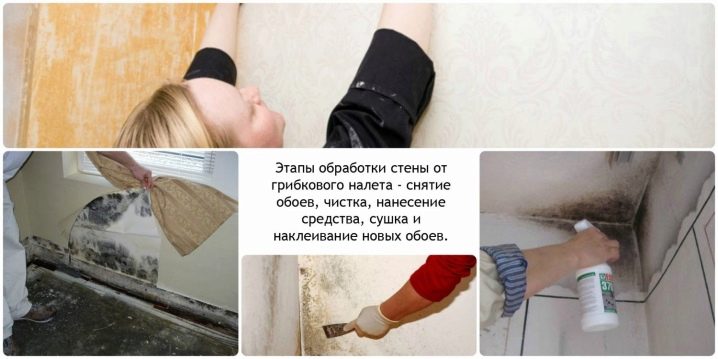
All work must be carried out using a respirator and a protective suit to prevent the resulting dust from getting into the respiratory system and on the skin, since the smallest particles can cause coughing and severe itching.

When starting work and priming the slabs, use an adhesive as a primer. When installing each next row, the vertical seam should be slightly offset relative to the previous row.
To make the coating last longer, it is advisable to apply a reinforcing layer over the insulation. To do this, an adhesive is applied to the insulation and the reinforcing mesh is tightly pressed against it. You need to wait for the reinforcing layer to dry and prime it. Now you can apply a layer of decorative plaster or make another type of cladding. High-quality reliable coverage is guaranteed to you.
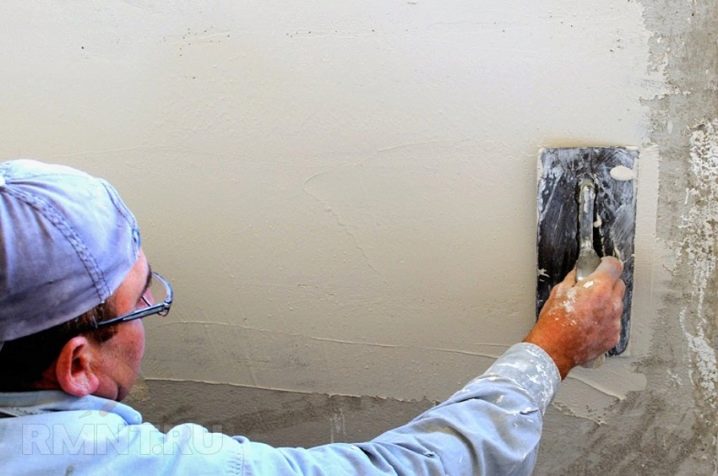
For information on how to insulate a plaster facade, as well as instructions from Isover, see the next video.













The comment was sent successfully.